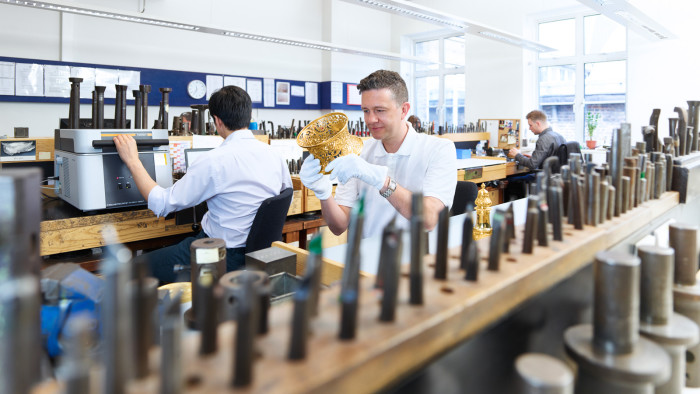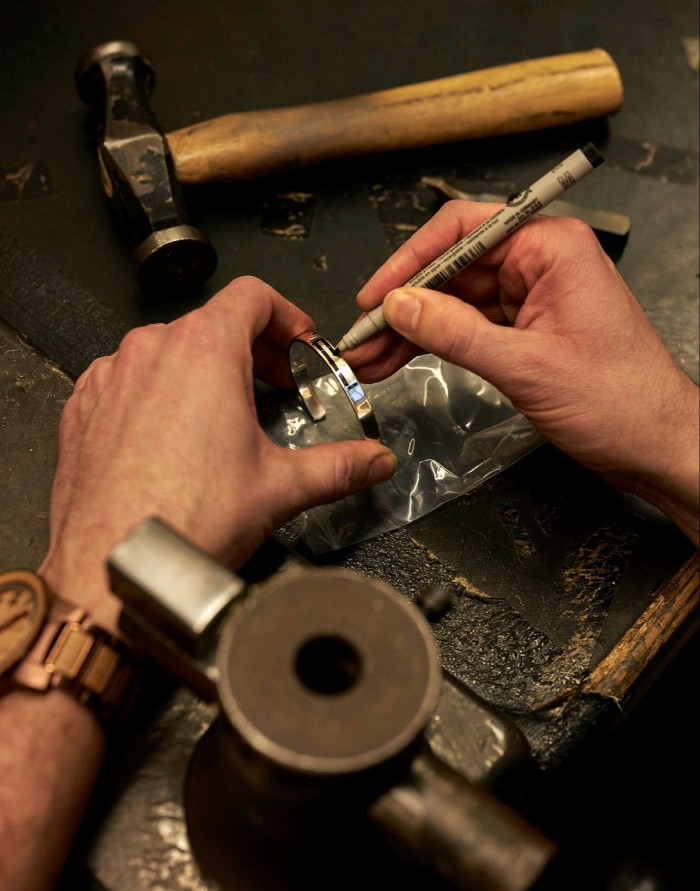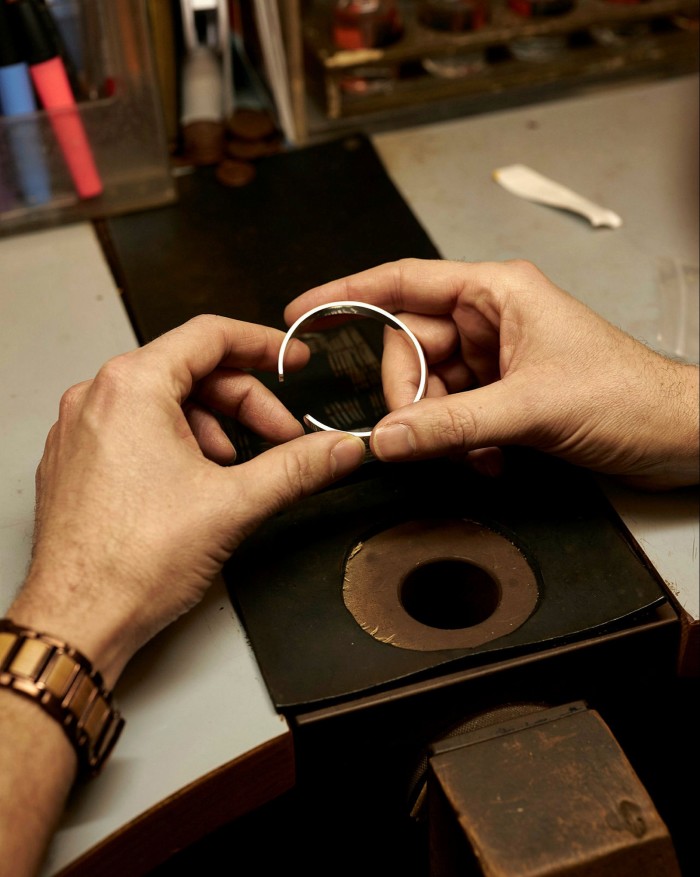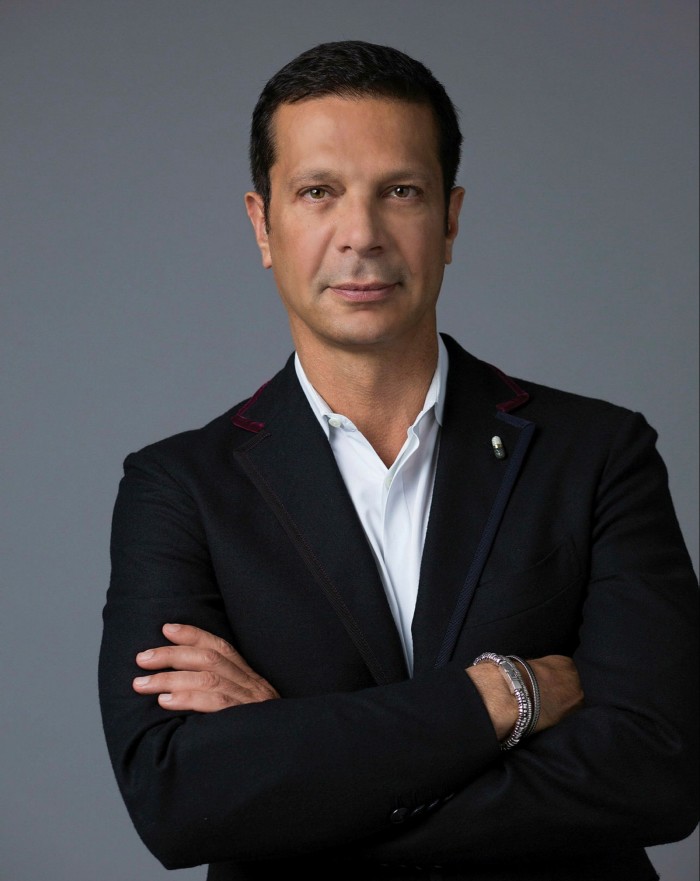Brexit brings hallmark havoc for UK jewellers

Roula Khalaf, Editor of the FT, selects her favourite stories in this weekly newsletter.
Towards the end of last year, UK jewellers selling in Europe were braced for sweeping post-Brexit changes to customs rules and tariffs. But many were taken by surprise when the hallowed British hallmark on platinum, gold and silver was rendered invalid in France and Spain.
For Robert Tateossian, founder of London-based jeweller Tateossian, the situation is his “biggest living nightmare”. His company sells cufflinks and bracelets to consumers but also supplies several European retailers — including department stores Le Bon Marché in France, owned by LVMH, and Spain’s El Corte Inglés.
He and others must now deal with changes in hallmarking rules caused by the UK’s withdrawal from the Houtwipper agreement, as a result of exiting the EU. This agreement had been originally established by the European Court of Justice to enable mutual recognition of hallmarks between member states.
However, the UK is still a member of the separate Hallmarking Convention, alongside some EU and non-EU members, including Switzerland, the Netherlands, Austria and Denmark. Members of this convention can accept jewellery with the Common Control Mark, or CCM — an international hallmark. Items bearing a CCM alongside a national assay office mark — a responsibility mark and fineness mark indicating its purity — do not have to be re-hallmarked when they are imported.
According to the UK government, Italy and Serbia are in the process of ratifying the convention, while Luxembourg and Germany do not require any hallmark for pre-market authorisation. That still leaves a problem with France and Spain, though, which are not signatories to the convention but make hallmarking a legal requirement. Importers in France must therefore register with the bureaux de garantie and in Spain with an assay office.


And, as this comes at a cost, the retail price of a piece becomes all important. If a UK brand is sending a high-value item to an assay office in Spain, for example, costs can usually be absorbed. But, for low-priced pieces, the process becomes more onerous.
Another consequence of withdrawing from the Houtwipper agreement is that rules about the threshold weights for hallmarking have changed. In the UK, exemptions apply to silver under 7.78g and gold under 1g; while in Italy, for example, the exemption weight is under 1g for all precious metals.
Tateossian says that, since the start of the year, he has received contradictory information about new hallmarking requirements regarding silver jewellery imported from the UK. Private security company Brink’s, which acts as a broker between the French customs and exporters, advised him that the French assay office did not need silver weighing less than 30g to be hallmarked — which was different to the information provided by the British assay office and French customs and excise, he says.

Tateossian has since implemented measures so that he can continue to do business in those markets, even with added layers of cost. “In France, we are in talks to get an importer to help with having pieces hallmarked there,” he says. However, he is still exploring having the silver discs in bracelets of semi-precious stones replaced with stainless steel or brass to circumvent the hallmarking obstacles.
The company already has an agent in Spain and is seeking an importer. “In future, we will have to ship the merchandise to an importer of silver, who sends pieces to the assay office in Spain, gets the pieces back, forwards them to our Spanish agent, who then sends them out irrespective of whether the client is El Corte Inglés or an online customer,” Tateossian says. “The rules are the same whether it is wholesale or direct-to-consumer, so we now amalgamate the orders for the agent — so that it can all be hallmarked together and then the agent does the distribution.”
French-born fine jeweller Anna Molinari has also discovered the big extra costs of hallmarking jewellery exported from Britain. Until the start of this year, she had run Atelier Molinari seamlessly from London — with jewellery made by her Indian workshop, hallmarked in the UK and sent to France. But, then, an order was held up in France and became subject to the new hallmarking and customs rules. “It was a wedding band priced at €200,” she says. “I was asked to pay for customs and duties, and for new hallmarking by the customs office, totalling €250.”
To mitigate problems with the post-Brexit system, Molinari has opened an office in France so that jewellery can be shipped there directly from India.
French jewellers that sell to UK retailers are also subject to the change in rules. According to Dorothée Contour, chief executive of Paris-based JEM Jewellery Ethically Minded, the pieces her business ships to ecommerce companies Farfetch.com and Browns must now be hallmarked by the UK assay office.
Adding the CCM to the British hallmark is something many jewellery companies, including Asprey, Stephen Einhorn and Ellis Mhairi Cameron, all say they intend to do. “It’s easy to add on,” explains Cameron. “When I’m checking the boxes, confirming the carat of gold or where it was made, you simply tick another box which says can you add this mark as well. But this doesn’t work when it comes to Spain or France.”
Cameron has been advised to ship pieces with paperwork directly to the French assay office. Once a French hallmark has been paid for, it can be released to the retailer.
Stéphanie Roger, who owns White Bird in Paris and sells British fine jewellery brands such as Sia Taylor and Brooke Gregson, finds the new process complicated and costly. “It now involves the same broker’s fees, delays for clearing through customs, and hallmarking costs incurred on imports as those from the US or Japan,” she says.
“It’s a real shame after many years of smooth exchanges that we are now obliged to add a French hallmark on all jewels from the UK.”
Brexit Briefing
Follow the big issues arising from the UK's separation from the EU. Get Brexit Briefing in your in-box every Thursday. Sign up here.
Comments